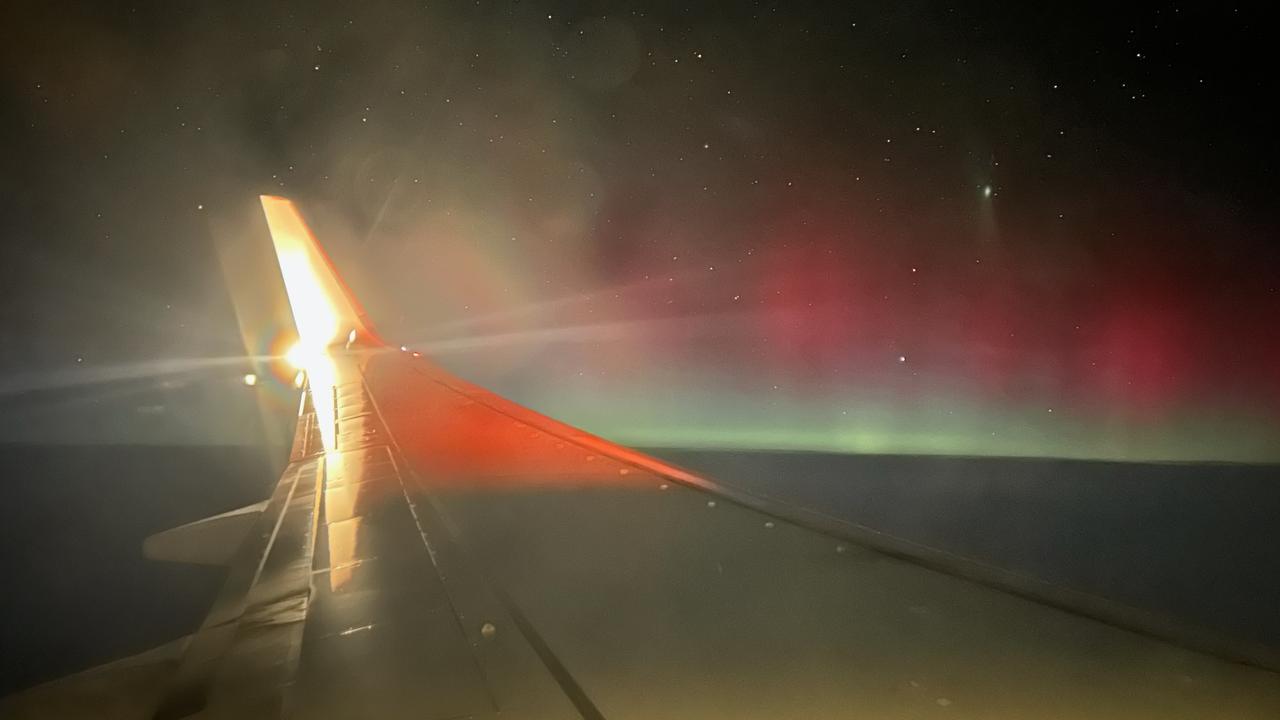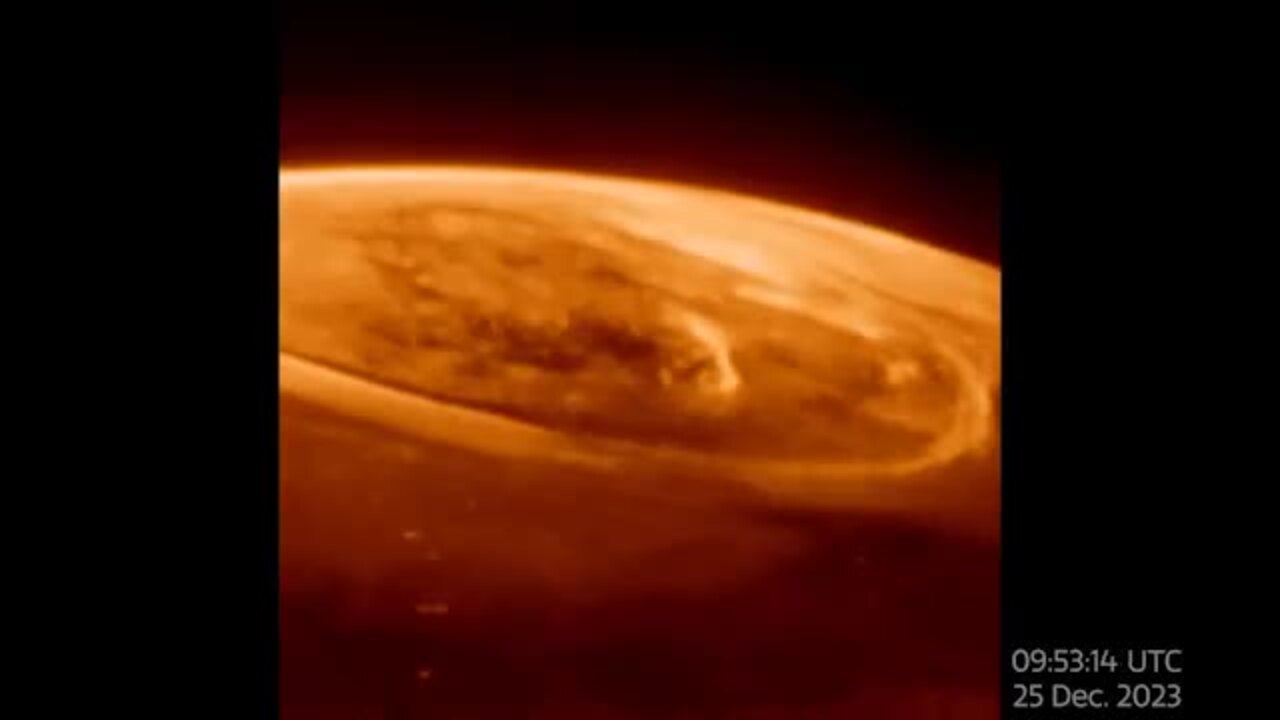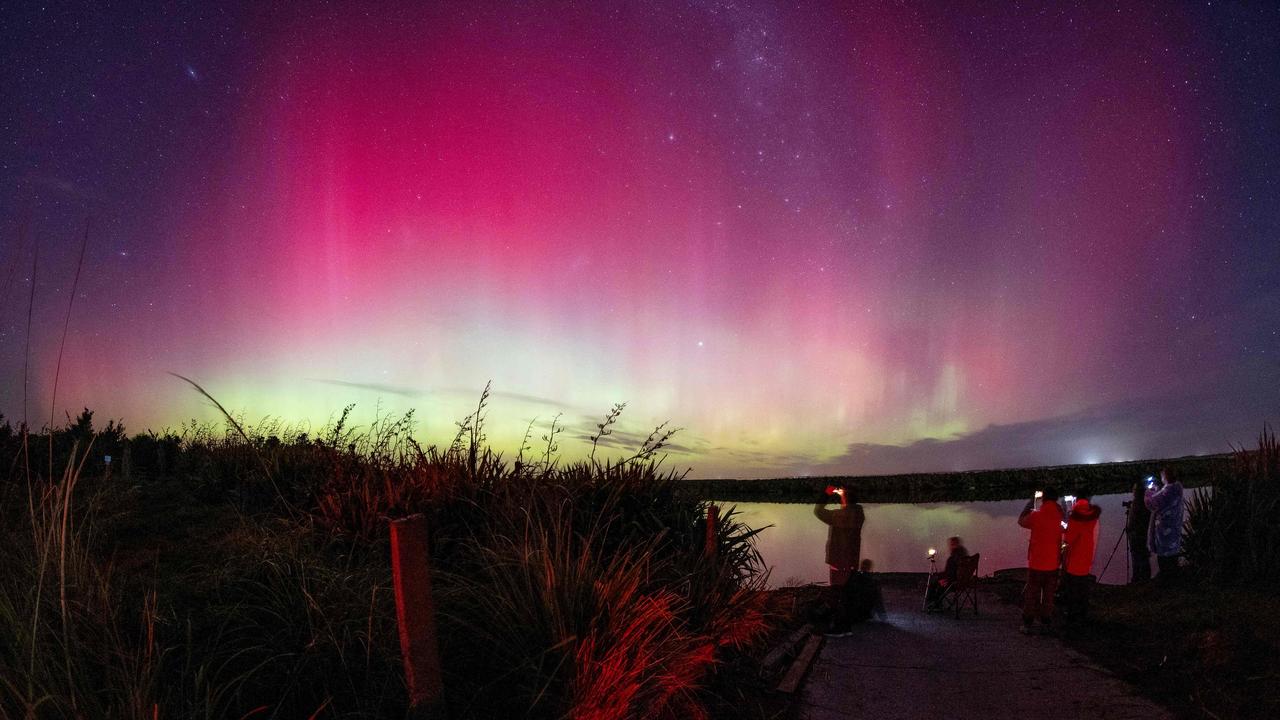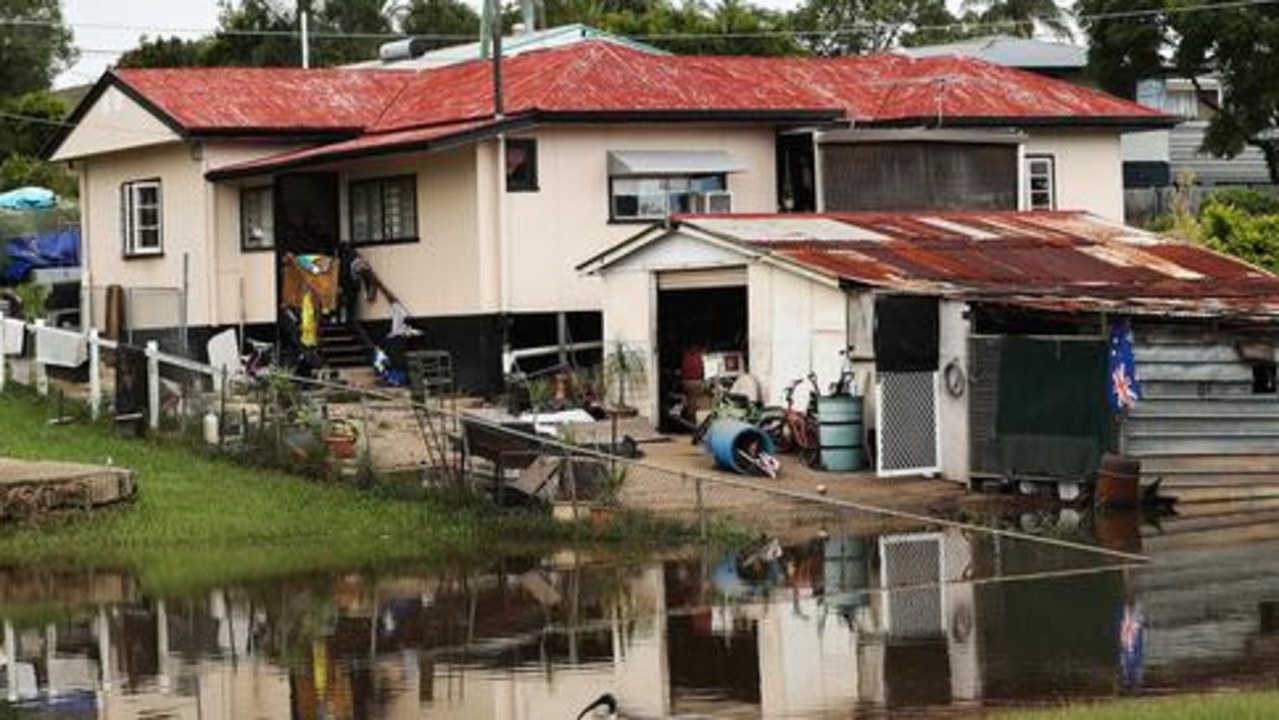Aurora australis to keep dazzling southern QLD stargazers for months
The weather might dampen chances of a repeat of Sunday night’s aurora australis this evening, but experts say there are plenty more of the night-time light shows ahead.

QLD News
Don't miss out on the headlines from QLD News. Followed categories will be added to My News.
Rain and cloudy conditions are set to put a dampener on Monday night’s aurora australis after stargazers were wowed with a spectacular display on Sunday across southern Queensland.
But experts said the intense solar activity driving the night-time light show, also called the Southern Lights, would linger this year as an 11-year solar cycle gradually wound down.
Impressive sightings of Sunday’s show were reported across the southeast’s darker corners including Peak Crossing near Ipswich, Best Of All Lookout at Springbrook in the Gold Coast hinterland and Lake Moogerah near Aratula.
University of Southern Queensland astrophysicist Brad Carter said a coronal mass ejection, or solar storm, was causing this week’s light show.
He cautioned that Monday night’s display would not be as good as that on Sunday, partly due to the weather, but said the conditions causing the solar storms would persist this year.
“So, the possibility of solar storms will continue for some time yet as solar activity only gradually declines to its next minimum,’’ Professor Carter said.

Sunday’s event was rated by US space agency NASA as a G4 event, with Monday night also tipped to hit that level.
For southern Queenslanders to see an aurora there needed to be a G4, or G5 storm — the strongest intensity.
The last G5 geomagnetic storm occurred in 2003.
The Australian Space Weather Forecasting Centre said the increased activity should continue until Tuesday June 3.

The source of this week’s solar storm was sunspot 4100, which was captured erupting on May 31 by satellites. The solar flare it unleashed lasted more than three hours, an unusually long time.
Clear dark night skies outside major towns was essential, but in southern Queensland even then the aurora was often visible only as a subtle glow on the southern horizon.

The best locations to see auroras were in southern Australia, such as Tasmania, South Australia and southern Victoria.
Viewing by eye was often best as the pulsing glow was easier to observe.
Capturing auroras on camera required good equipment and skills.
Stargazers recommended 10–24mm wide-angle lenses, 10–15 second shutter speeds, an ISO starting at 3200 and white balance about 4600K.
Face south and use your smart phone’s compass if unsure of the direction.
Auroras are caused by very fast moving electrically-charged particles from the sun hitting the upper atmosphere, particularly in polar regions where Earth’s magnetic field traps the charge.
Energy from the particles is emitted as light. Greens and reds come from particles hitting oxygen atoms, while violet colours come from nitrogen atoms.
More Coverage
Originally published as Aurora australis to keep dazzling southern QLD stargazers for months









